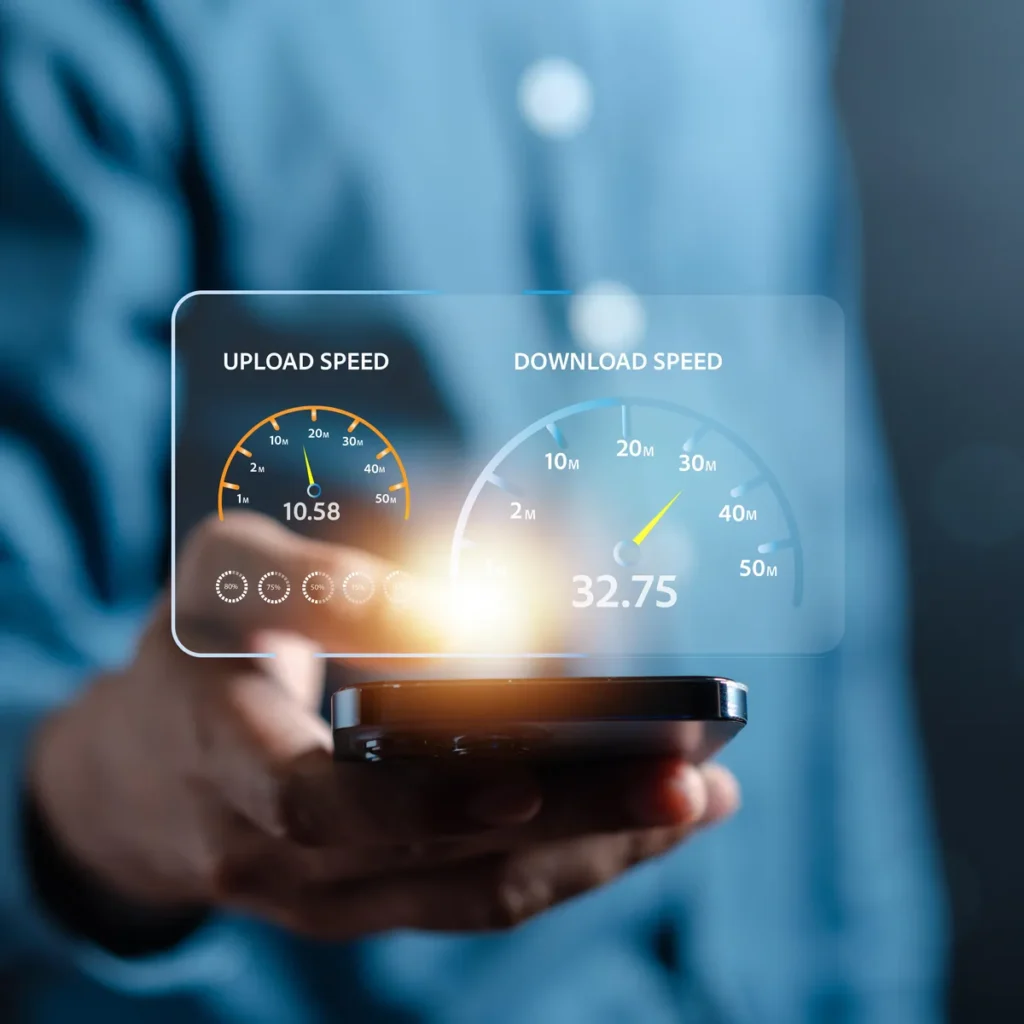In the current modern day society where streaming, remote work and online gaming dominate the daily life, a sluggish internet connection could feel like the spinning wheel of doom; a total roadblock. Imagine that you are attending a very important virtual meeting or at the climax of watching your favorite series, then suddenly your screen freezes and frustration starts to kick in. Does that sound familiar?
With our daily lives weaving around seamless connectivity, slow internet isn’t just annoying, it causes a total disrupt to work, play and everything else in between. But wait, what if the problem isn’t your problem? And what if your home setup holds the key to unlocking faster speeds for your device?
Follow through this guide to discover practical solutions to boost your internet performance and make your Wi-Fi work for you and not against you.

Practical Steps to Supercharge Your Internet Speed at Home
To be able to boast your network speed, you need to first figure out what’s dragging it down. This is because understanding the root cause of a thing will help you take the right steps. Sometimes the problem is with your Internet Service Provider (ISP) while other times, the issue could be right under your nose which could be outdated hardware, network congestion, or even sneaky background apps hogging your bandwidth. Let’s consider the following practical steps for maximizing your internet speed at home;
- Diagnose the Problem: Is It Your Internet or Something Else?:
You first need to figure out what is dragging down your internet speed before considering boosting it. Sometimes, the problem could be your Internet Service Provider, but other times, the real culprit could be sitting right under your nose. Diagnose the real issue by doing the following;
- Run a speed test using Google Speed Test or Ookla, to monitor, download and upload speeds.
- Always check your internet traffic to review how many devices that are connected to your network. These devices tends to quietly use your data.
- Test different rooms in your house for Wi-Fi signals because they tend to weaken as they travel, especially through walls.

2. Optimize Your Router Placement:
The location of your router in your home plays a very crucial role in determining the internet speed. If you have it tucked away at a corner or hidden behind thick walls, then your signal is already disadvantaged. Wi-Fi works better when it can ‘breathe’ so follow this guideline to to set up your router for optimal performance;
- Centralize the position of your router to be in the center of your house, this will allow signal to spread accordingly in all directions.
- Elevate the position of your router to keep if off the floor. You can place it on a shelf because the higher it is, the better the signals become.
- Avoid any obstacles like walls, metal objects or even mirrors as they could serve a blockers, thereby interfering with your Wi-Fi signals.
- If you have a large home, invest in Wi-Fi extenders or mesh systems as they boost you signal and eliminates dead zones to ensure you stay connected no matter what part of the house you are.
3. Secure Your Network from Bandwidth Thieves:
When internet speed starts to get slower than usual, it could be that someone else might be enjoying your bandwidth without your permission. Unsecured network access is usually an easy target for freeloaders, which significantly can slow down your internet speed. Here’s how to secure your network against bandwidth thieves;
- Avoid obvious passwords by setting a strong Wi-Fi password using a mixture of uppercase letters, lowercase letters, numbers and even symbols.
- Enable WPA3 or WPA2 Encryption by checking your router settings and ensuring that your network uses this access to prevent an unauthorized entry.
- Always remember to change the default admin credentials as routers come with factory-set usernames and passwords. These follow come settings are easy for hackers to change and therefore needs update.
- Monitor your router to be aware when any unrecognized device gets connected to it. When you discover any unfamiliar connection, quickly disconnect.
4. Upgrade Your Equipment:
Sometimes, a slow may not be your fault. It could be an outdated hardware that has worn out overtime that fail to keep up with the modern internet speed. This way, upgrading can make a world of difference. Adhere to these steps to upgrade your equipment;
- Use a modern and if you have a modern version, consider upgrading to one that supports Wi-Fi 6 or at least Wi-Fi 5 for faster speeds and better range.
- If you have a large home, consider getting a mesh Wi-Fi system. Use mesh networks like Google Nest Wi-Fi or Netgear Orbi ensure coverage in every room, eliminating dead zones.
5. Use Ethernet for High-Performance Devices:
While Wi-Fi is very convenient, it is not yet the fastest and the most reliable connection. Devices that demands high performance, like the smart TVs, gaming consoles would require an ethernet connection for a better performance. Ethernet is a better option because it helps to avoid interference thereby delivering a more consistent speed when compared to Wi-Fi. To set it up, simply plug your device into the router using a Cat-6 cable for the best results.

Conclusion
Having a slow network connection doesn’t have to be a norm for you in this modern day. By first diagnosing the problem, securing your network connection, optimizing your router placement and upgrading your equipment, you can now finally maximize your internet speed without relying solely on your ISP- Internet Service Provider.
It doesn’t matter what you need your network for, a slow network is a flop! Ensure to follow these steps and say goodbye to buffering, lag, and frustration; because you deserve internet that works as hard as you do!




